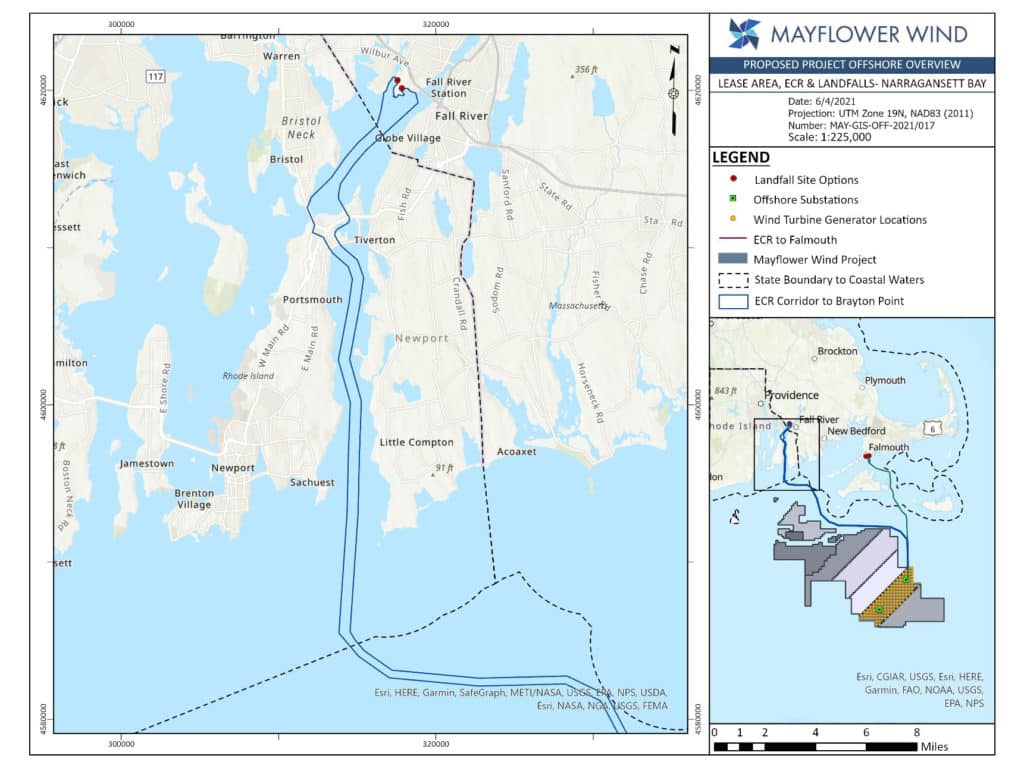
An organized group of recreational fishermen are opposing a proposed large cable being buried under the Sakonnet River in coastal Rhode Island near Newport, reports ecoRI News. The cable will be constructed to operate a new offshore wind farm.
The ecoRI report states the Rhode Island Saltwater Anglers Association (RISAA) is against the proposed cable from wind developer Mayflower Wind, saying that they have concerns about what cable construction will do to recreational fishing and area fish habitats.
Mayflower Wind says impact to coastal marine life and habitat from the buried wind farm cable will be minimal, and maintenance of cables will be limited to the river floor around the cable corridor. But RISAA isn’t convinced.
“We believe that during cable installation, an industrial operation such as burying a cable that is more than a foot wide will disturb fishing across the entire River,” wrote RISAA president Greg Vespa in an August letter sent to Mayflower Wind.
Instead of burying a power cable under the Sakonnet River, RISAA proposes that Mayflower Wind run the cable overland in Massachusetts, where land already is developed and fish habitats and anglers would be minimally affected. The proposed overland cable route would run from the towns of Fall River to Westport.
Mayflower Wind disagrees.
“Because of the speed and nature of the cable installation, the construction phase will create minimal interference with vessel traffic, including recreational fishing,” says Daniel Hubbard, Mayflower Wind’s director of external affairs. “During construction the seabed will be disturbed, but recovery will occur relatively quickly with minimal long-term disturbance around the installation area.”
However, RISAA also expresses concern about impacts to area cod populations. The New England Fishery Management Council has designated the Sakonnet River as an inshore juvenile cod habitat area of concern, and cod fishing remains restricted.
Hubbard argues that operation and maintenance of the cable will have minor fishing impact. Once cables are buried only an annual seabed survey of the areas surrounding the cable is required, he says.
Sakonnet River anglers target sea bass, flounder, bluefish, stripers, and scup from March to December, according to RISAA vice president Rich Hittinger.
“Our concern is the Sakonnet River,” said Hittinger. “It’s heavily used for fishing.”
The Mayflower Wind project is a joint venture between Royal Dutch Shell and Ocean Winds. Its lease area is 30 miles south of Martha’s Vineyard and contains 149 positions for turbines and substations, reports ecoRI. The wind farm could generate enough power for 800,000 New England homes.








